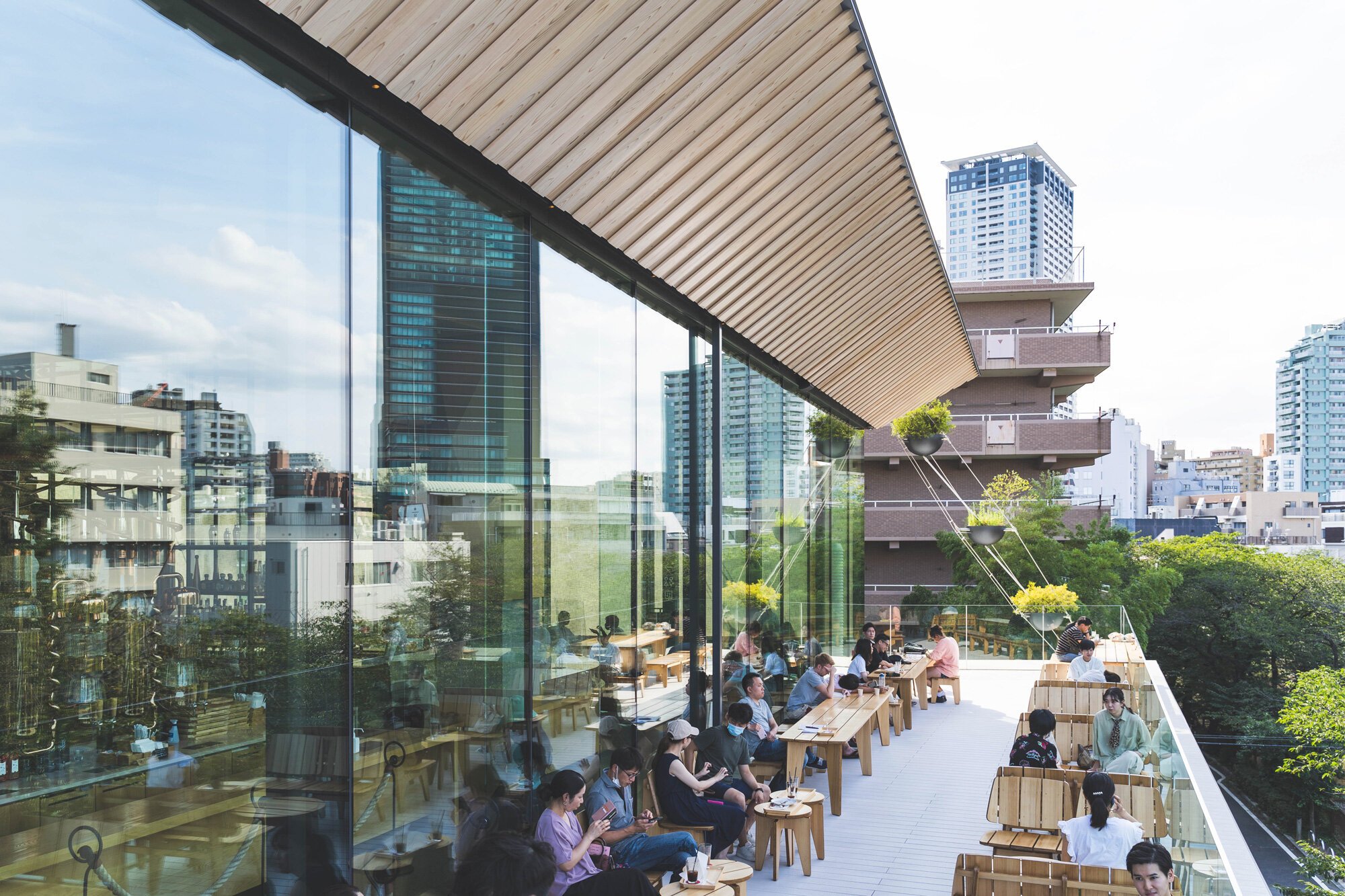Nakameguro, Tokyo: Starbucks Reserve Roastery
The second largest Starbucks in the world as of 2020, Tokyo’s Starbucks Reserve Roastery is an impressive coffee experience and is situated in the hip, artsy neighborhood of Nakameguro.
How to get there
Starbucks Reserve Roastery Tokyo is a several minute walk from Nakameguro Station, which is accessible via the Tōyoko and Hibiya lines. It’s located along the Meguro riverside, one of the main destinations in the area.
Starbucks Reserve Roastery Tokyo was the 5th of its kind, and the opening was a huge event.
It’s been a popular destination for locals and tourists alike, so much so that it’s typical to have to go to the building next door in order to pull a number for a time slot. They use a system called AirWAIT, and you’ll be able to check how many people are in front of you in real-time.
Because tourism is almost non-existent in this 2020 summer, I seized the opportunity and checked it out.
Starbucks Reserve Roastery Tokyo was formerly the biggest Starbucks in the world, edging out Starbucks Reserve Roastery Shanghai (which I also visited) in 2019 before being dethroned later that year by Chicago’s. It is 4 stories and 32,000 sq. ft. (2,973 sq. meters) big.
Sakura cask at Starbucks Reserve Roastery Tokyo
It’s centered around a 56-foot (17 meter) high copper cask, decorated with 2,100 copper cherry blossom flowers and leaves, handcrafted by Japanese artisans.
This perfectly aligns not only with Japan, but also with the neighborhood since the Meguro river right next to it is known for its cherry blossoms. I personally consider it to be one of Tokyo’s top 5 photogenic cherry blossom spots.
The attention to detail at this location is fantastic, and something very Japanese.
The shop was designed by top Japanese architect Kuma Kengo, who has designed other Starbucks locations like the one in Dazaifu, Fukuoka, as well as the Tokyo Olympic Stadium and many other buildings.
The ceiling brings forth images of Japanese wood crafts, and was indeed inspired by origami. Much of the wood in the shop, from counters to tables to walls, are made of Japanese cyprus.
Even the staff demonstrated the Japanese “omotenashi” hospitality mixed with a friendly touch. There were no shortage of smiles (despite masks) and even when I felt my camera may be distracting, they’d give a thumbs up, invite me to take closer shots, and even offered to start brewing coffee for a better shot.
The first floor
The first floor focuses on coffee, baked goods and the gift shop.
Taking up the majority of the floor are the main coffee bar and the bean roasting facilities. The first floor’s roaster is at the base of the copper cask, flanked by the main bar which serves an enormous range of coffees.
From 5 different brew methods comes coffees like whiskey barrel-aged cold brew, and concoctions with names such as Melrose-Tokyo, Shakerato-bianco and Pepper nitro with with a Jerky-twist.
Princi, a bakery from Milano, has one of their three Tokyo locations here. From artisan sandwiches to tarts to sourdough bread, there’s likely something that will be appealing.
After trying their mango baguette and Princi loaf, I was sold! Basically they’re my new favorite bakery. We even went to their Daikanyama location the next week to buy more.
The gift shop area has everything coffee and Starbucks related, including clothing and a collaboration castella cake with famous, nearby Japanese bakery Fukusaya [J].






The shop was actually smaller than I expected, especially after seeing the size of Shanghai’s location and the fact that Japanese love buying souvenirs. In any case, there’s likely something you’ll at least consider purchasing.
The second floor
The stairs to the right of Princi leads up to the second floor, which is Starbucks’ tea-focused floor - TEAVANA.
There’s a main counter, a seating area, a separate tea section that brings you closer to the different types of tea, and a wall for tea items available for purchase.
The third floor
The third floor was where we decided to take a seat. It’s divided into a few sections - a second roasting facility, an outdoor seating area and the ARRIVIAMO Bar.
The bar is where coffee craft and mixology comes together, and a handful of skilled bartenders create and serve a range of coffee-inspired cocktails and mocktails.
We ordered two drinks: A Silver Needle Highball and a Starbucks Reserve Espresso Martini.



The Silver Needle Highball was made with white tea and was officially described as having a gentle scent, light floral taste and silky texture. It was very subtle and smooth, the most refined highball I’ve ever had.
The Starbucks Reserve Espresso Martini was made with single origin Rwanda Abakundajawa coffee (officially described as having a medium roast and body, with hints of tangerine zest, graham crackers, and nougat, and being smooth and sweet), single malt vodka, vanilla syrup and bean to bar chocolate. After debating the steep ¥2,000 price, I went for it and have zero regrets. It was ridiculously good.
The fourth floor
The top floor is called AMU Inspiration Lounge, and is mainly a seating area. There’s both an indoor area and outdoor deck space.
Like the third floor deck, it looks out to a view of the Meguro river, which will be beautifully covered in pinkish-white cherry blossoms during the spring.
What was cool about our visit, and it was completely coincidental, was that it was on the 24th anniversary of Starbucks’ opening their first shop in Japan.
The first shop was in Ginza, Tokyo, and the first order was a double tall latte.
Everything here was amazing and once again, I found myself really impressed by Starbucks Reserve Roastery.
It’s a culmination of a global coffee chain focusing on the craft and details, and adding their own artistic twist to it in order to create a premium experience for coffee fans.
Worth a visit.




















